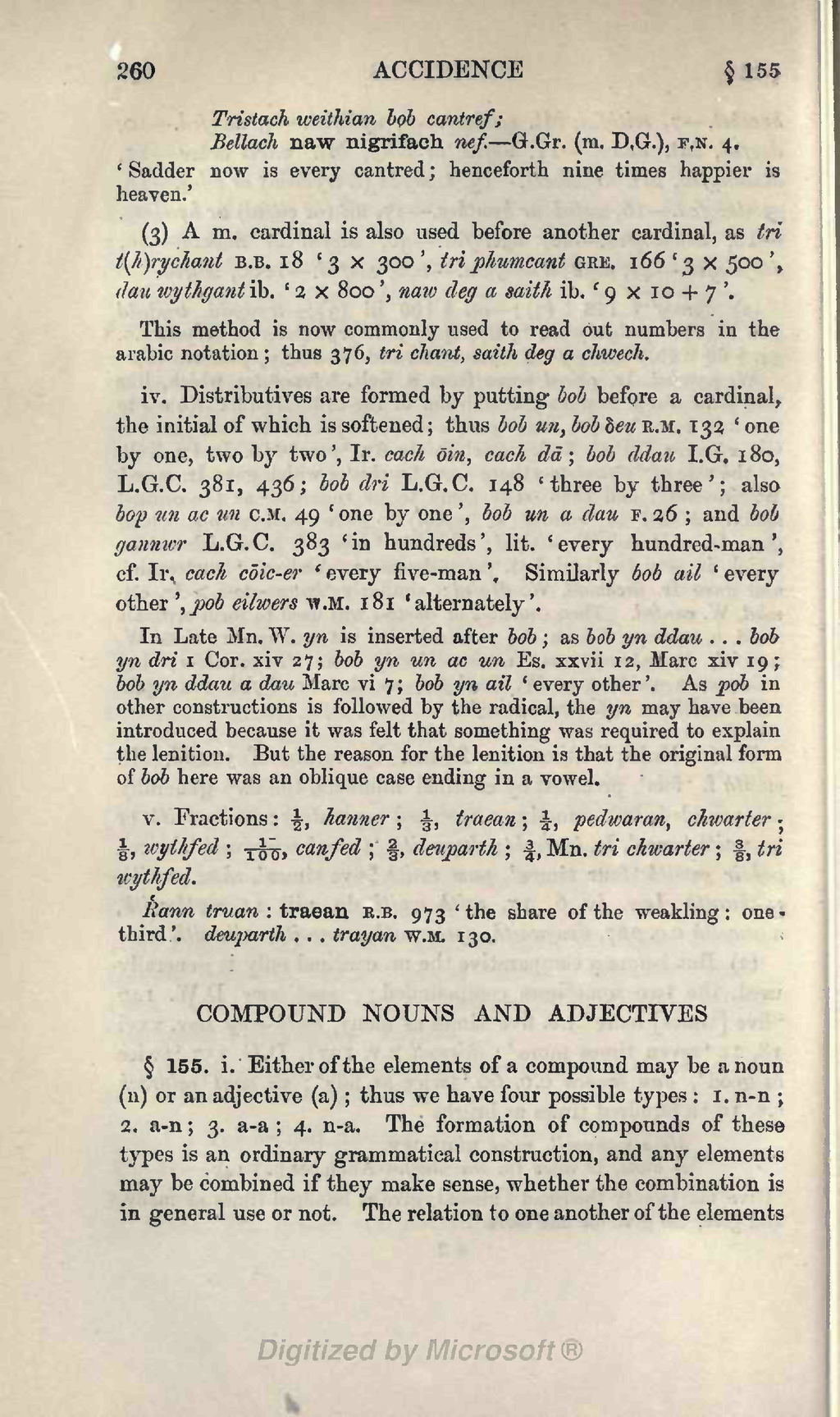- Tristach weithian bob cantref;
- Bellach naw nigrifach nef.—G.Gr. (m. D.G.), f.n. 4.
‘Sadder now is every cantred; henceforth nine times happier is heaven.’
(3) A m. cardinal is also used before another cardinal, as tri t(h)rychant b.b. 18 ‘3 × 300’, tri phumcant gre. 166 ‘3 × 500’, dau wythgant ib. ‘2 × 800’, naw deg a saith ib. ‘9 × 10 + 7’.
This method is now commonly used to read out numbers in the arabic notation; thus 376, tri chant, saith deg a chwech.
iv. Distributives are formed by putting bob before a cardinal, the initial of which is softened; thus bob un, bob ẟeu r.m. 132 ‘one by one, two by two’, Ir. cach ōin, cach dā; bob ddau I.G. 180, L.G.C. 381, 436; bob dri L.G.C. 148 ‘three by three’; also bop un ac un c.m. 49 ‘one by one’, bob un a dau f. 26; and bob gannwr L.G.C. 383 ‘in hundreds’, lit. ‘every hundred-man’, cf. Ir. cach cōic-er ‘every five-man’. Similarly bob ail ‘every other’, pob eilwers w.m. 181 ‘alternately’.
In Late Mn. W. yn is inserted after bob; as bob yn ddau…bob yn dri 1 Cor. xiv 27; bob yn un ac un Es. xxvii 12, Marc xiv 19; bob yn ddau a dau Marc vi 7; bob yn ail ‘every other’. As pob in other constructions is followed by the radical, the yn may have been introduced because it was felt that something was required to explain the lenition. But the reason for the lenition is that the original form of bob here was an oblique case ending in a vowel.
v. Fractions: 12, hanner; 13, traean; 14, pedwaran, chwarter; 18, wythfed; 1100, canfed; 23 deuparth; 34, Mn. tri chwarter; 38, tri wythfed.
R͑ann truan: traean r.b. 973 ‘the share of the weakling: one-third’. deuparth…trayan w.m. 130.
Compound nouns and adjectives
§ 155. i. Either of the elements of a compound may be a noun (n) or an adjective (a); thus we have four possible types: 1. n-n; 2. a-n; 3. a-a; 4. n-a. The formation of compounds of these types is an ordinary grammatical construction, and any elements may be combined if they make sense, whether the combination is in general use or not. The relation to one another of the elements
